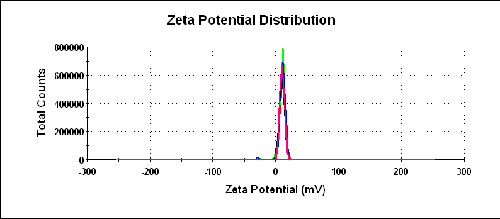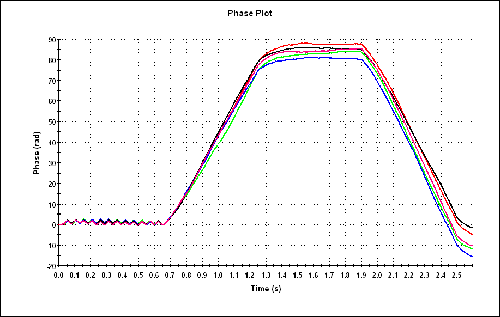For the Zetasizer Nano Z, ZS or ZS90 instrument, the minimum size specification (diameter) for zeta potential measurements is 3.8nm. This technical note contains details of the experimental procedures and results obtained from measurements of a lysozyme solution as demonstration of this minimum size specification for zeta potential measurements.
The measurement of the zeta potential of small particles and molecules is limited by the level of scattering in excess of the dispersant.
The scattering intensity, and hence the ability to perform a zeta potential measurement depends on the optical arrangement, the laser power, the scattering angle, the sample concentration and the scattering properties of the material.
Another factor that determines the ability to do a measurement is the size of the material. This determines the extent of Brownian motion of the particle or molecule which adds a broadening to the mobility signal of the zeta potential measurement, and limits the accuracy of the measurement of the zeta potential mean value.
This broadening becomes more pronounced at smaller sizes, and is minimized in the Zetasizer Nano design by measuring at a small scattering angle. The Zetasizer Nano measures at an angle of 12.8 degrees (water as dispersant). This enables the Zetasizer to determine the mean value of the zeta potential down to 3.8nm. This measurement capability of the Zetasizer Nano was tested using a dispersion of lysozyme. This molecule has a hydrodynamic diameter of 3.8nm when dispersed in a salt solution.

|
The lysozyme was prepared in 100mM KCl with 10mM BisTri solution at a concentration of 5mg/mL.
The measurements were taken at 25°C using a viscosity of 1.40mPa.s
The zeta potential distributions and corresponding phase plots obtained from 5 repeat measurements of the 5mg/ml lysozyme solution are shown in figures 1 and 2 respectively. The phase plots were used to calculate the mean of the three zeta potential distributions and these highlight the excellent quality of the data obtained.
Table 1 is a summary of the 5 repeat measurements and shows the zeta potential mean (in mV), the zeta potential deviation (the standard deviation of the peak in mV) and the electrophoretic mobility (in m2/Vs x 10-8).
| Record | Zeta Potential Mean (mV) | Zeta Potential Deviation (mV) | Electrophoretic Mobility (m2/Vs x 10-8) |
|---|---|---|---|
| 1 | 11.1 | 4.34 | 0.875 |
| 2 | 10.2 | 5.13 | 0.800 |
| 3 | 10.4 | 5.67 | 0.821 |
| 4 | 9.75 | 4.28 | 0.768 |
| 5 | 10.0 | 3.41 | 0.792 |
| Mean (SD) | 10.3 (0.5) | 4.57 (0.9) | 0.811 (0.04) |
The zeta potential values obtained demonstrate the repeatability of the result at this size, and the electrophoretic mobilities are in agreement with referenced, published literature values [1].

|
The results reported in this technical note confirm that the minimum size capability (diameter) for zeta potential measurements with the Zetasizer Nano Z, ZS or ZS90 using lysozyme as the test material, is 3.8nm.
[1] K Meyer, The relationship of lysozyme to avidin (1944) Science 99, 291.